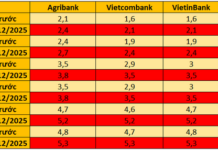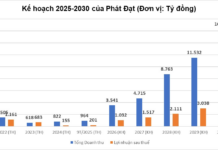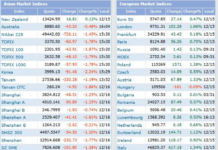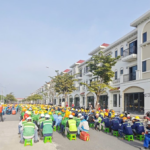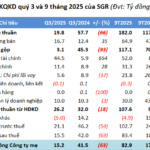Essential but Overlapping Concerns
In the draft Decree on the Development and Management of Housing and Real Estate Market Databases, currently open for public consultation, the Ministry of Construction proposes that individuals and organizations must provide home ownership information to integrate into the national information system by 2026.
Speaking to reporters, Lawyer Diep Nang Binh, Head of Tinh Thong Luat Law Firm, stated that the Ministry’s proposal is a necessary step to complete the national housing and real estate market database, aligning with the mandate of the 2023 Housing Law. This serves as the direct legal basis for the Ministry to implement synchronized measures, aiming for transparent and modern management.
“If executed effectively, data integration will enhance market transparency, curb speculation, dual pricing, and tax evasion, while supporting urban planning, property valuation, and taxation. Citizens and businesses will also benefit by submitting information only once, as data will be interconnected and used for multiple administrative procedures,” said Mr. Binh.
However, the primary risk lies in data duplication and increased administrative burdens, as information such as names, identification numbers, addresses, area, and legal status already exists in land, population, and tax databases. Without a mechanism for data interoperability, requiring redundant submissions will lead to inefficiency and public frustration.
Therefore, Lawyer Binh suggests prioritizing the connection and synchronization of existing data, requiring citizens to supplement only missing information, while ensuring personal data security. The roadmap should be divided into two phases: data reconciliation and standardization by 2026, and completion of missing declarations by late 2027.

If the Ministry of Construction mandates separate declarations without data interoperability, it will increase administrative burdens and fragment the national database. Photo: Hoang Ha |
Supporting the Ministry’s initiative, Dr. Tran Xuan Luong, Vice Director of the Vietnam Real Estate Market Research Institute, believes this effort should have been implemented earlier.
However, Dr. Luong noted that the Ministry’s proposal overlaps with ongoing work by the Ministry of Agriculture and Environment and the Ministry of Public Security in developing land databases.
“One agency collects land data, while another gathers housing data. Yet, real estate inherently includes land use rights, property ownership, and attached assets. Consequently, the Ministry of Construction will also need to update land data. Unintentionally, a meaningful initiative risks becoming administrative, wasting citizens’ time and creating redundancies,” said Dr. Luong.
Citing examples from South Korea and Japan, he explained that these countries maintain unified national databases for housing and real estate, including both land and properties, ensuring synchronized and efficient management.
“A national data center for land and housing should be established under a single authority. This center would manage all data related to land, housing, and attached structures,” he proposed.
Without Interoperability, ‘Multiple Truths’ Will Emerge
Meanwhile, as local authorities and land departments also request citizens to provide land certificate information, Lawyer Diep Nang Binh emphasized that concerns about data overlap between land departments, local governments, and the Ministry of Construction are well-founded.
Citizens have repeatedly submitted similar information for land registration, certificate issuance, or ownership updates. If the Ministry of Construction mandates separate declarations from 2026 without data interoperability, it will exacerbate administrative burdens and fragment the national database.
Under the principle of “one source, multiple uses,” personal identification data already exists in the national population database (Ministry of Public Security), while land plot and user details are in the national land database (Ministry of Agriculture and Environment).
Thus, Lawyer Binh suggests the Ministry of Construction should leverage and automatically synchronize this data via the national data-sharing platform, requiring citizens to supplement only housing-specific details (e.g., property type, floor area, legal status) not available in other systems.
“Instead of redundant submissions, the Ministry should establish an interconnected data-sharing mechanism. This aligns with the ‘no double submission’ principle in the 2023 Electronic Transactions Law,” he stressed.
Additionally, he warned of overlapping data and inconsistencies if ministries fail to synchronize systems.
“If each agency maintains separate, non-interconnected databases, it will lead to ‘multiple truths’—where the same asset has conflicting details across agencies regarding area, value, or legal status. This could distort land pricing, taxation, or urban planning, causing inefficiency and eroding public trust,” he cautioned.
According to Mr. Binh, the fundamental solution is to establish a national data interoperability mechanism, with the Ministry of Public Security coordinating, issuing unified open data standards, and operating the national data integration platform. Each ministry would manage sector-specific data, while core data would synchronize in real-time via personal and asset identifiers.
Simultaneously, a Decree on Public Data Sharing should be issued, clarifying responsibilities, penalties, and update deadlines.
With these measures, the 2026 declaration requirement will avoid redundancy, instead fostering a “unified data version” to effectively support management, taxation, and protection of citizens’ legal ownership rights.
Nguyen Le
– 09:28 29/10/2025
Novaland (NVL) Reports 9-Month Revenue of Nearly VND 5.4 Trillion, Accumulated Losses Halved Year-on-Year
Novaland (NVL) has unveiled its Q3 business results, reporting consolidated net revenue of nearly VND 5.4 trillion for the first nine months. The accumulated loss has been significantly reduced by more than half compared to the same period last year, now standing at VND 1.820 trillion. The company’s operations highlight several key achievements: accelerated construction across all flagship projects, successful handover of 720 units, and the issuance of 1,935 land-use right certificates in the first three quarters.
Novaland Reports Q3 Net Loss of VND 1.8 Trillion, Inventory Surges to VND 152 Trillion
Our business operations have achieved significant milestones, including accelerated construction across all key projects, with 720 units successfully handed over and 1,935 land titles issued in the first three quarters.
Can Tho Emerges as a New Growth Hub, Redefining Livable Cities
Nestled in the southern reaches of Can Tho, this burgeoning area is mirroring the transformative rise of prominent urban hubs in Ho Chi Minh City, such as Thu Thiem and Phu My Hung. From its strategic geographical location to its burgeoning socio-economic stature, the region is magnetizing robust investment flows, firmly establishing itself as the next growth epicenter in the forthcoming era.








